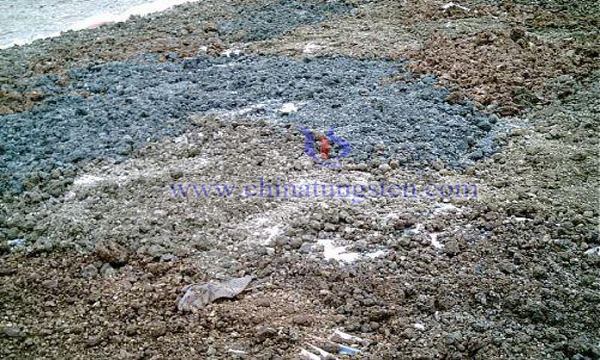Tungsten Recovery and Nickel from Waste Catalyst for Petroleum Hydrogenation
- Details
- Category: Tungsten Information
- Published on Friday, 03 May 2019 14:24
Nickel-tungsten catalysts are widely used in hydrofining and hydrocracking. Their main components are about 25% tungsten trioxide, 2% nickel oxide, 50% alumina, 5% silicon dioxide and a small amount of iron and vanadium. Waste nickel-tungsten catalysts contain tungsten, nickel and other metals. If they can be recycled, they will produce enormous economic benefits. At the same time, the pollution and damage to the environment caused by waste nickel-tungsten catalysts are avoided.

Some scholars have published a scheme for recovering tungsten from spent catalysts for petroleum hydrogenation. The process includes:
(1)Waste catalysts were dried at 80 ℃ in a vacuum drying chamber for 24 hours to remove moisture.
(2)Place it in a sealed laboratory sample mill to comminute.
(3)grinding and sieving the crushed catalyst;
(4)The sifted waste catalyst was put into the muffle furnace. The temperature of the muffle furnace was 500 ℃ and the oxidation roasting time was 3 h.
(5)Sodium carbonate was added into the calcined catalyst 4 times the amount of WO3, and then roasted in the muffle furnace. The temperature of the muffle furnace was 600 ℃, and the oxidation roasting time was 3 h.
(6)The calcined powder is dissolved in a constant temperature water bath, stirred and heated. The solid-liquid ratio is 1:3, the leaching temperature is 80 ℃, and the leaching time is 1 h.
(7)After leaching, filtrate and repeat step 6 to get sodium tungstate solution.
(8)Calcium tungstate was precipitated by adding CaCl2 into sodium tungstate solution.
(9)In step 7, dilute sulfuric acid was added to the filter residue, and the solid-liquid ratio was 1:6, the leaching temperature was 70 ℃, and the leaching time was 3 h. After leaching, the sulfate solution of nickel was obtained by filtration.
By recovering tungsten and nickel from waste catalysts for petroleum hydrogenation, environmental pollution can be reduced and recycling of resources can be realized. It is also beneficial for catalyst manufacturers to reduce production costs, improve technical service level and product market competitiveness. It has great recycling value and economic benefits.
- Tungsten Manufacturer & Supplier, Chinatungsten Online: www.chinatungsten.com
- Tungsten News & Prices of China Tungsten Industry Association: www.ctia.com.cn
- Molybdenum News & Price: news.molybdenum.com.cn
- Tel.: 86 592 5129696; Fax: 86 592 5129797; Email: sales@chinatungsten.com



 sales@chinatungsten.com
sales@chinatungsten.com